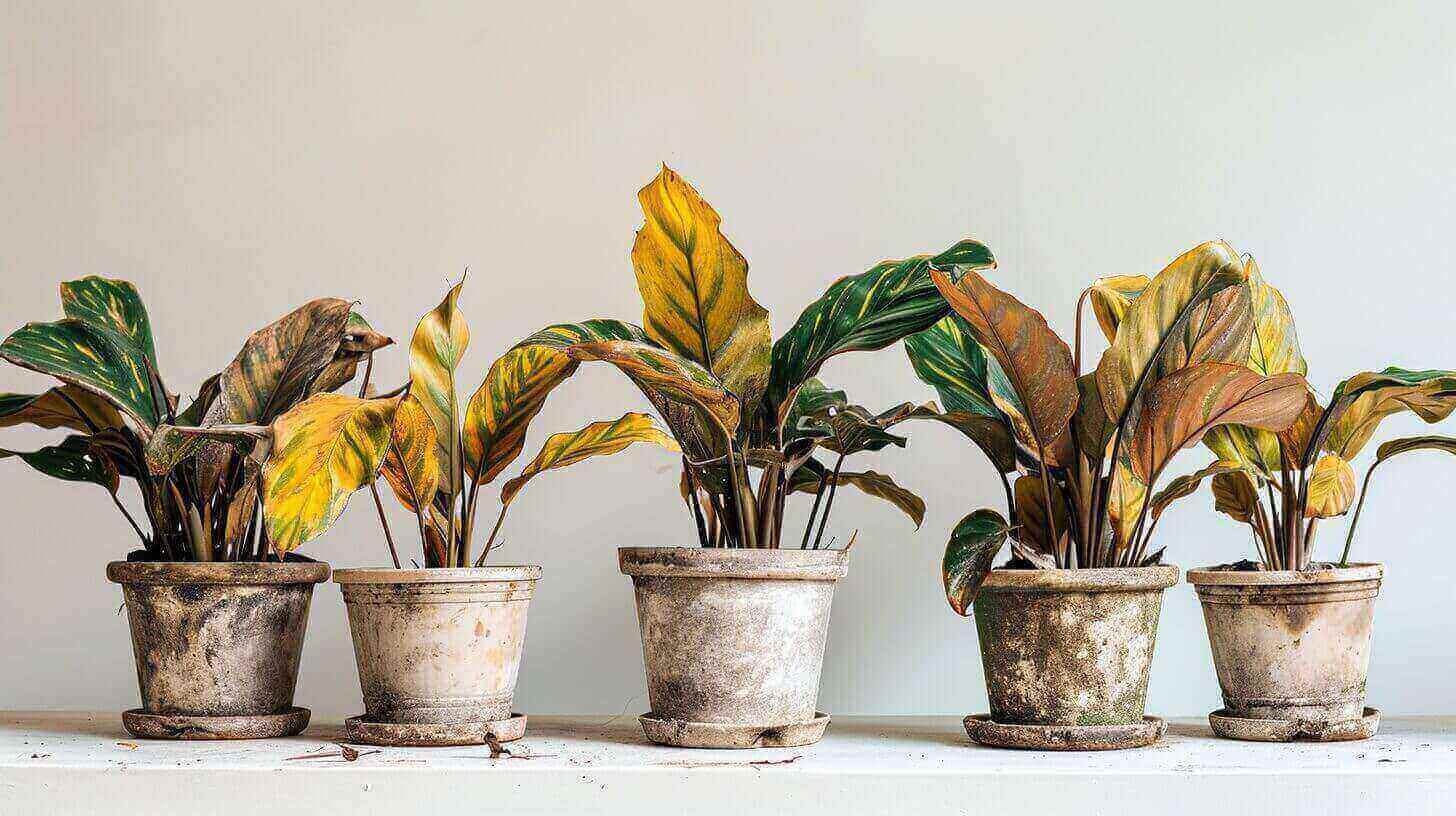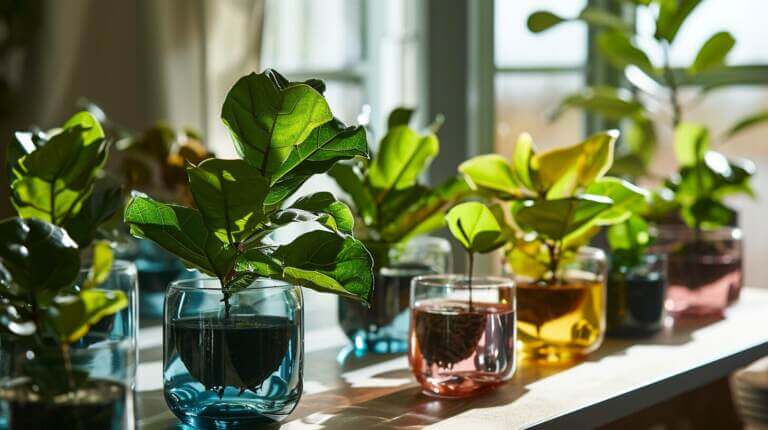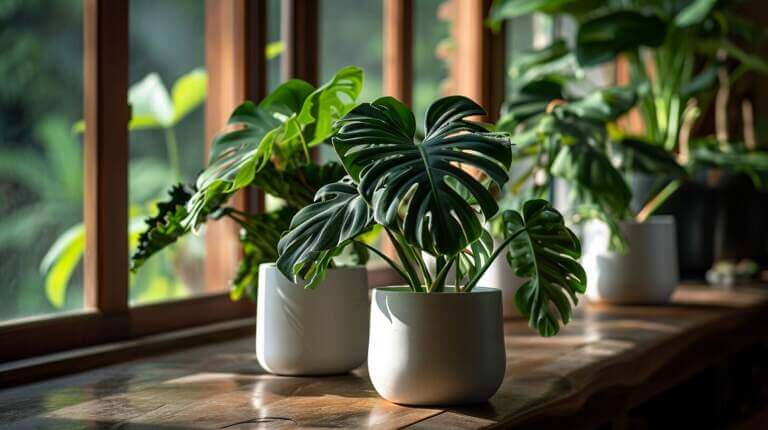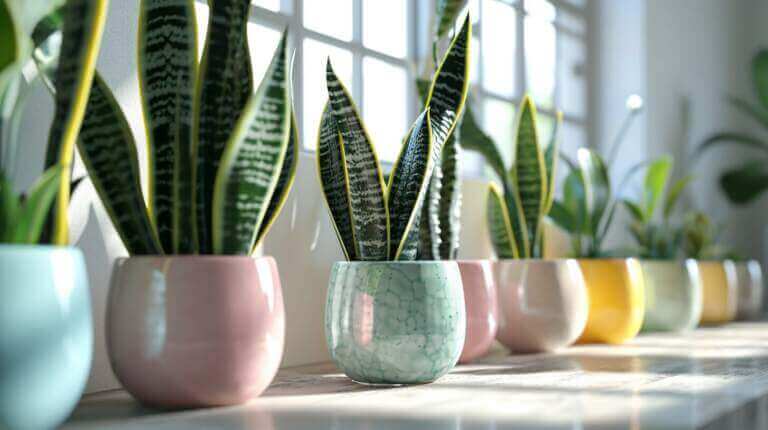How to revive a Dying Calathea Plant: step-by-step guide to save a dying prayer plant
Are you worried about your calathea houseplant that’s showing signs of distress? Don’t fret! With the right care and attention, you can revive your dying calathea and bring it back to its lush and vibrant state. In this article, I will share essential tips and techniques to rescue your calathea from droopy, wilting leaves. By following these rehab tips, you’ll be able to create a nurturing environment that mimics the plant’s natural habitat and help it thrive once again.
Key Takeaways:
- Proper watering is crucial for reviving a dying calathea plant with droopy leaves.
- Maintain high humidity levels to ensure the plant’s well-being and prevent wilting.
- Provide bright, indirect light to keep the calathea healthy and vibrant.
- Protect the plant from extreme temperatures and direct sunlight.
- Identify and treat any pests or diseases promptly to save your calathea from further damage.
Calathea Leaves Drooping or Turning Brown and Crispy
Calathea plants are known for their beautiful and vibrant foliage, but sometimes, their leaves can start drooping and turning brown and crispy. This can be a sign of stress and indicates that the plant is not receiving the ideal conditions it needs to thrive. Understanding the possible causes and implementing the necessary steps can help you revive your calathea and bring it back to its healthy state.
“The drooping and browning of calathea leaves can be caused by various factors such as low humidity, draughts, heat, air conditioning, inadequate watering, or excessive exposure to sunlight,” explains horticulturist Jane Adams. “These conditions can lead to moisture loss, nutrient deficiencies, and physical damage to the leaves.”
One of the primary culprits behind drooping and browning leaves is low humidity. In its native rainforest habitat, calathea thrives in high humidity levels. When placed in drier environments, the plant struggles to retain moisture, leading to drooping and crispy leaves. To combat this, you can increase humidity by misting the leaves regularly or placing the plant near a humidifier. Additionally, grouping your calathea with other plants or placing it on a tray filled with water and pebbles can help create a more humid microclimate.
Another common cause of drooping and browning leaves is inadequate watering. Calathea plants prefer consistently moist, well-draining soil. If the soil becomes too dry between waterings or if the plant is overwatered and sits in soggy soil, it can stress the roots and lead to leaf problems. It’s important to water your calathea thoroughly, allowing excess water to drain from the pot, and then wait for the top inch of soil to dry out before watering again. Regularly checking the moisture level of the soil using your finger or a moisture meter can help you determine when it’s time to water your plant.
Lastly, calathea leaves can also droop and turn brown and crispy if they are exposed to direct sunlight. These plants prefer bright, indirect light, and prolonged exposure to direct sunlight can cause sunburn and damage the leaves. To protect your calathea from too much sunlight, move it to a shaded area with dappled light or use sheer curtains or blinds to filter the sunlight.
| Possible Causes of Calathea Leaves Drooping or Turning Brown and Crispy | Potential Solutions |
|---|---|
| Low humidity | – Increase humidity by misting the leaves or using a humidifier – Group plants together or place on a tray with water and pebbles – Avoid placing near air vents or drafts |
| Inadequate watering | – Water thoroughly, allowing excess water to drain from the pot – Wait for the top inch of soil to dry out before watering again |
| Excessive exposure to sunlight | – Move to a shaded area with dappled light – Use sheer curtains or blinds to filter the sunlight |
How to Revive a Dying Calathea with Drooping, Brown Crispy Leaves
If you notice your calathea with drooping, brown crispy leaves, it is crucial to take immediate action to save the plant. Here are some essential steps to revive a dying calathea:
- Water generously: Start by giving your calathea a thorough soak. Make sure to water the plant until the excess water drains from the pot. This will help rehydrate the root ball and provide much-needed moisture to the plant.
- Check soil moisture: After watering, check the moisture level of the soil regularly. Calatheas prefer consistently moist soil, so water the plant when the top inch of the soil feels slightly dry. Avoid overwatering, as it can lead to root rot.
- Avoid draughts and air conditioning: Calatheas thrive in high humidity. Protect the plant from draughts and air conditioning, which can dry out the leaves. Consider misting the leaves or using a humidifier to provide the necessary humidity.
- Provide bright, indirect light: Place the calathea in an area with bright, indirect light. Avoid exposing it to direct sunlight, as it can cause further stress and damage to the leaves.
By following these steps, you can give your calathea the best chance of recovery. Remember to be patient, as it may take some time for the plant to regain its health and vitality.
Related Tips:
If you are struggling to revive your calathea, here are some additional tips that may help:
- Trim damaged leaves: If the leaves have turned completely brown and crispy, it’s best to trim them off. This will redirect the plant’s energy towards new growth.
- Repot if necessary: If the roots of your calathea are crowded or if the soil is compacted, consider repotting the plant into a slightly larger pot with fresh, well-draining soil. This can help improve the plant’s overall health.
Calathea Leaves Turning Yellow or Brown and a Dying Appearance
One of the common problems faced by calathea plant owners is leaves turning yellow or brown, accompanied by a dying appearance. This can be distressing, but understanding the causes and taking appropriate action can help revive your calathea back to health.
The most common cause of yellow or brown leaves is overwatering. When the roots of the calathea plant are constantly soaked in water, they can suffocate, leading to root rot. To prevent this, it is crucial to ensure proper drainage in the pot and water the plant only when the top inch of the soil feels dry. It’s important to strike a balance between keeping the soil moist and avoiding waterlogged conditions.
Another contributing factor to yellow or brown leaves is excessive fertilizer. Overfertilizing can result in nutrient burn, causing the leaves to wither and die. It is recommended to use a balanced, water-soluble fertilizer and follow the instructions provided for frequency and dosage.
| Possible Causes of Yellow or Brown Leaves | Solutions |
|---|---|
| Overwatering | – Check moisture level of soil and water only when top inch feels dry – Ensure proper drainage in the pot |
| Excessive Fertilizer | – Use a balanced, water-soluble fertilizer – Follow instructions for frequency and dosage |
Revive Calathea Leaves Curling due to Cold Temperatures
Calathea plants are known for their beautiful, vibrant leaves, but they can become stressed and start to curl when exposed to cold temperatures. It’s important to understand how to revive your calathea and prevent further damage. In this section, I will provide you with some essential tips to help your calathea recover from the effects of cold temperatures.
To start, it’s crucial to move your calathea to a warmer location. Cold drafts and low temperatures can cause the leaves to curl and lose their vitality. Place your plant in an area away from windows or doors that may bring in cold air. Keep the temperature consistent, ideally between 65 to 75 degrees Fahrenheit, to create a favorable environment for your plant’s recovery.
Additionally, providing your calathea with dappled sunlight can also aid in its revival. The plant enjoys bright, indirect light, but direct sun can be too harsh and exacerbate its curling leaves. Find a spot where your calathea can receive gentle, filtered sunlight throughout the day. This will help the plant regain its strength and improve its overall health.
| Tip 1: Move to a warmer location | Tip 2: Provide dappled sunlight |
|---|---|
| Avoid cold drafts and keep temperatures between 65 to 75 degrees Fahrenheit. | Place the calathea in an area where it can receive gentle, filtered sunlight. |
Get Your Calathea out of Direct Sun
Calathea plants are known for their stunning foliage and vibrant colors, but they are also sensitive to direct sunlight. Exposing your calathea to direct sun can cause the leaves to dry out, become discolored, and even burn. To keep your calathea healthy and thriving, it’s important to place it in a shaded area away from direct sunlight.
Direct sun can be especially harmful during the peak hours of the day, when the sun is the strongest. The intense heat and UV rays can quickly damage the delicate leaves of your calathea. Instead, opt for a location with dappled sunlight or indirect light. This provides the plant with enough light to photosynthesize while protecting it from the harsh effects of direct sun.
When selecting a spot for your calathea, consider areas in your home that receive bright, indirect light, such as near a north or east-facing window. You can also create a suitable environment by using sheer curtains or blinds to filter the sunlight. This will help to maintain the optimum growing conditions for your calathea and prevent any further damage from direct sun exposure.
Summary
- Direct sunlight can cause calathea leaves to dry out, discolor, and burn.
- Place your calathea in a shaded area away from direct sunlight.
- Opt for a location with dappled sunlight or indirect light.
- Consider areas near north or east-facing windows or use sheer curtains to filter the sunlight.
| Direct Sun Exposure | Effects on Calathea Leaves |
|---|---|
| Direct sunlight during peak hours | Dries out leaves, causes discoloration, and burns |
| Intense heat and UV rays | Damages delicate leaves |
| Dappled sunlight or indirect light | Optimal growing conditions |
By taking steps to keep your calathea out of direct sun, you can ensure that it thrives and maintains its stunning appearance. Remember to provide your calathea with the right amount of light, humidity, and water to create a favorable environment for growth. With proper care, your calathea will continue to be a beautiful addition to your indoor plant collection.
Stop Overwatering or Underwatering
One of the common mistakes when caring for a calathea plant is overwatering or underwatering. Both of these extremes can lead to issues and make the plant more susceptible to drooping leaves, root rot, and overall decline. To ensure the optimal health of your calathea, it’s essential to find the right balance when watering.
Overwatering can suffocate the plant’s roots, leading to root rot and ultimately causing the plant to wither and die. To prevent overwatering, it’s important to check the moisture level of the soil before watering. Stick your finger about an inch deep into the soil, and if it feels dry, it’s time to water. Ensure that the pot has proper drainage to allow excess water to escape and avoid waterlogging.
On the other hand, underwatering can cause the calathea’s leaves to become dry, crispy, and wilted. The plant may also show signs of dehydration and struggle to thrive. To avoid underwatering, monitor the moisture level of the soil regularly and water when it starts to feel dry. However, be cautious not to let the soil completely dry out between waterings.
Finding the right watering routine for your calathea may take some trial and error. Remember to observe the plant’s behavior, check the soil moisture, and adjust your watering frequency accordingly. By providing the appropriate amount of water, you can help your calathea thrive and prevent issues caused by overwatering or underwatering.
Treat Pests and Plant Disease
Pests and plant diseases can wreak havoc on a calathea plant, causing it to become sickly and eventually die. Common pests that infest calathea plants include aphids, scale insects, and mealybugs. These tiny creatures feed on the plant’s sap, leading to leaf damage and overall decline in health.
To treat pests on your calathea, it is important to identify them promptly. Inspect the plant regularly for signs of infestation such as sticky residue, yellowing leaves, or small crawling insects. If you spot any pests, isolate the plant to prevent the infestation from spreading to other plants.
There are several methods you can use to combat pests on your calathea. One option is to use a gentle soap solution and spray it directly on the affected areas. Another effective treatment is neem oil, which has insecticidal properties. Dilute the neem oil according to the instructions and apply it to the leaves and stems of the plant.
In addition to pests, plant diseases can also affect the health of your calathea. One common plant disease that affects calatheas is root rot, which is caused by overwatering or poor drainage. To prevent and treat root rot, make sure your calathea is potted in well-draining soil and avoid overwatering. If you suspect root rot, gently remove the affected parts of the plant and repot it in fresh soil.
FAQ
How much water does a Calathea plant need?
Calathea plants don’t need much water. The rule of thumb is to water the calathea when the top inch of soil feels dry. Overwatering can cause root rot.
What level of humidity does a Calathea plant prefer?
Calathea is a tropical plant and prefers humid conditions. You can increase humidity by placing the plant near a humidifier or misting the leaves.
What type of pot is best for a Calathea plant?
A pot with a drainage hole in the bottom is best for a Calathea plant. This prevents water from sitting at the base of the pot, which can lead to root rot.
What should I know about caring for a prayer plant?
Prayer plants, including Calatheas, need indirect light, high humidity, and well-draining soil. They should be watered when the top inch of soil is dry. This is everything you need to know to keep your prayer plant healthy.
How do I care for a Calathea as a houseplant?
As a houseplant, Calathea needs indirect light, high humidity, and well-draining soil. It’s also important to keep your plant away from drafts and sudden temperature changes.
How do I protect my Calathea plant from scorching?
Protect your Calathea plant from scorch by keeping it away from direct sunlight. These plants prefer indirect light.
How do I deal with spider mites on my Calathea plant?
If you notice spider mites on your Calathea plant, isolate the plant and treat it with a mild insecticidal soap. Regularly check for signs of pests to catch infestations early.
Why is my Calathea plant wilting despite adequate watering and humidity?
If your Calathea plant is wilting despite adequate care, it may need to be repotted. Over time, the potting soil can become compacted, which can affect water absorption.
How often should I fertilize my Calathea plant?
Calathea plants should be fertilized every 4-6 weeks during the growing season with a balanced houseplant fertilizer. However, they don’t require much fertilizer, so it’s better to under-fertilize than over-fertilize.







